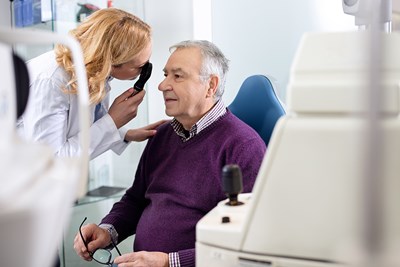Strabismus is an issue with the eyes, generally rooted in the muscles. While one eye looks forward, the other may wander to a different direction, eventually causing serious visual problems. While strabismus can be an embarrassing and frustrating condition, it is treatable. Here’s a look at the causes, symptoms, types, and treatments of strabismus.
Causes of Strabismus
Many children are born with strabismus (called congenital strabismus), but exactly why is still unknown in about half of these cases. The other half seems to be largely due to a variety of diseases present at birth, such as Cerebral Palsy, Noonan Syndrome, Retinopathy of prematurity, or congenital Rubella, among other things. When strabismus appears in adults, it is generally because of a whole different set of disorders and injuries, among them including Grave’s disease, diabetes, botulism, shellfish, eye or brain injuries, various types of vision loss, and stroke.
Essentially, the muscles in either eye are not coordinated to allow the eyes to simultaneously focus on a single object. While one eye looks at one thing, the other muscles send the other eye either up, down, left, or right, and focus on a separate object. The brain gets two images, causing confusion in the visual process. While the brain may eventually begin ignoring the weaker of these images, this can eventually result in a serious loss of vision for that eye. Without treatment, the weaker eye may remain weak, a condition called “amblyopia,” or lazy eye.
Symptoms of Strabismus
The symptoms of strabismus are not necessarily present all the time. There are two kinds of strabismus that can greatly impact when and how symptoms present; unilateral strabismus is present only in one eye, while in alternating strabismus the eyes are alternately affected.
According to the National Institute of Health, strabismus may cause you to have uncoordinated eye movements, see double, and/or have poor vision or depth perception. Additionally, the eye(s) may not be in the same place horizontally -- one or both may turn in toward the nose (esotropia), out toward the temples (exotropia) -- or vertically -- one may seem higher than the correct eye (hypertropia) or lower than the correct eye (hypotropia).
Strabismus Treatments
Before treatment can begin, it is essential to have a detailed optical exam, and sometimes even a neurological examination. After this, your doctor will probably begin by correcting the current visual disparities, such as prescribing glasses when necessary. Any amblyopia that may be present must be dealt with, often by covering the stronger eye so that the amblyopic eye is forced to improve. Your doctor may even recommend “eye exercises” to help improve muscles. In some cases, this will be sufficient to correct and strengthen the muscles. However, it is extremely important to wear any glasses or eye patches your doctor prescribes for this to be successful.
If it isn’t successful, surgery may be the next step. According to the NIH, “different muscles in the eye will be made stronger or weaker” during surgery. However, if any complications of strabismus, particularly amblyopia, are unresolved, surgery will not be as successful. Most experts agree that the younger treatment is attempted for congenital strabismus, the more successful it will be. It is possible for the strabismus to recur, thus it is important to monitor your eyes yourself, as well as keep up with annual eye appointments.



